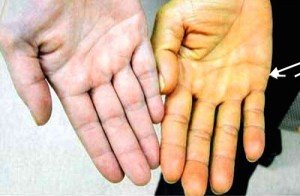
Sexually Transmitted Infections (STIs) are the kind of infections that passed from one person to another through intimate sexual contact. STIs are also called STDs (Sexually Transmitted Diseases).
There are many kinds of sexually transmitted infections. STIs are very common all around the world. In the United States alone, more than 19 million people get STIs every year.
Here is a list of the most common Sexually Transmitted Infections:
- Chancroid
- Chlamydia
- Gonorrhea
- Hepatitis B
- Genital Herpes
- HIV/AIDS
- Genital Warts
- PID
- Public Lice
- Scabies
- Syphilis
- Trichomoniasis
It is important to know which types of STIs are out there, since more than half of all of us will get one at some time in our lives. With the graphic bellow you can gain more knowledge about this topic and inform yourself more as well as others.
Here are the 21 most common signs and symptoms of sexually transmitted diseases:
1. Unusual vaginal discharge
2. Unusual vaginal bleeding
3. Fever
4. Fatigue
5. Sores or blisters
6. Penile discharge
7. Burning or pain when urinating
8. Lower abdominal pain
9. Persistent vaginal yeast infections
10. Swollen and/or painful testicles
11. Bumps on or around genitals
12. Yellowing of eyes or skin
13. Rash
14. Itching in genital area
15. Itching on body
16. Hair loss
17. Rectal pain or discharge
18. Swollen glands in the groin
19. Loss of appetite
20. Flu-like symptoms
21. Enlarged lymph nodes
Some of the most prevalent sexually transmitted infections are Syphilis, Chlamydia, Gonorrhea, AIDS, and herpes; and most of them share the same symptoms, so it is good to know how to identify them. Although both men and women are affected by STIs, women often get more severe health problems from STIs than men. It’s important to detect STIs as soon as possible to start the treatment, because untreated STIs can cause serious health issues such as cancers (cancers of anus, penis, vagina, vulva, and throat cancer), pelvic inflammatory disease, infertility, and pregnancy problems.
In some cases such as HPV (Human Papilloma Virus) and HIV, there is no treatment for the virus itself. but, there are natural and pharmaceutical treatments for the health problems that are caused by virus.
Being aware of the signs and symptoms is priority in order to know if you have an infection and for it to be treated rapidly and properly. By reading this infographic, it will help you learn more about these infections, their symptoms, prevention and treatment.

[Last Updated on March 11th 2014]
By Nima Shei MD
<!–noadsense–>





